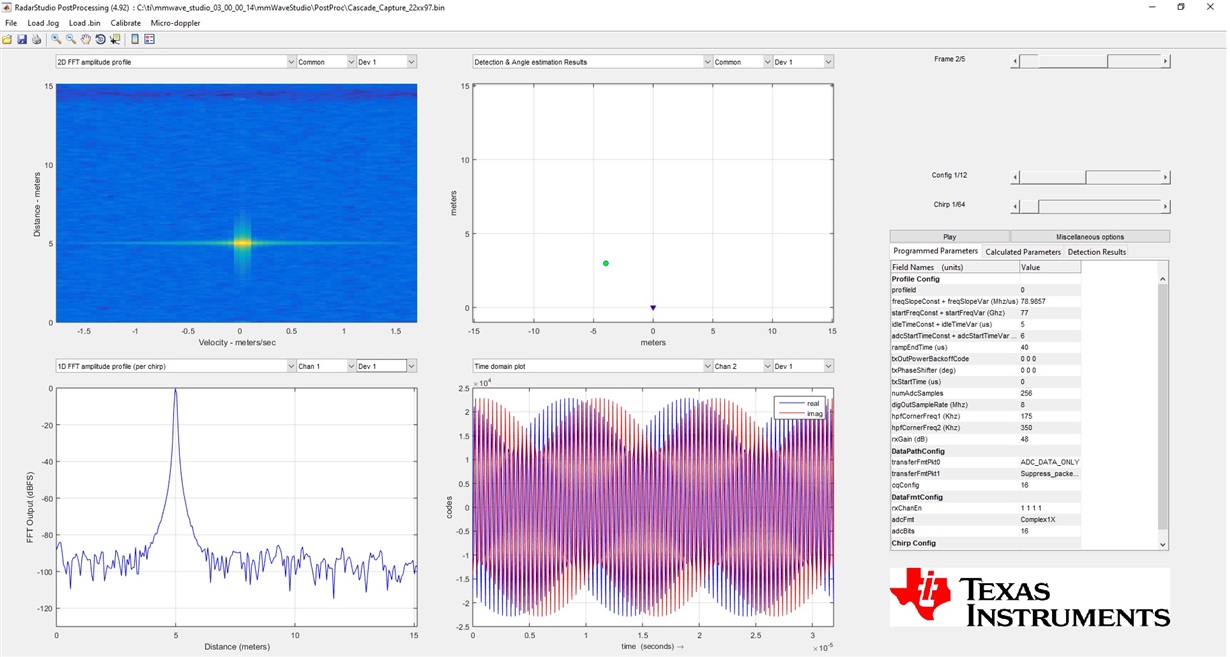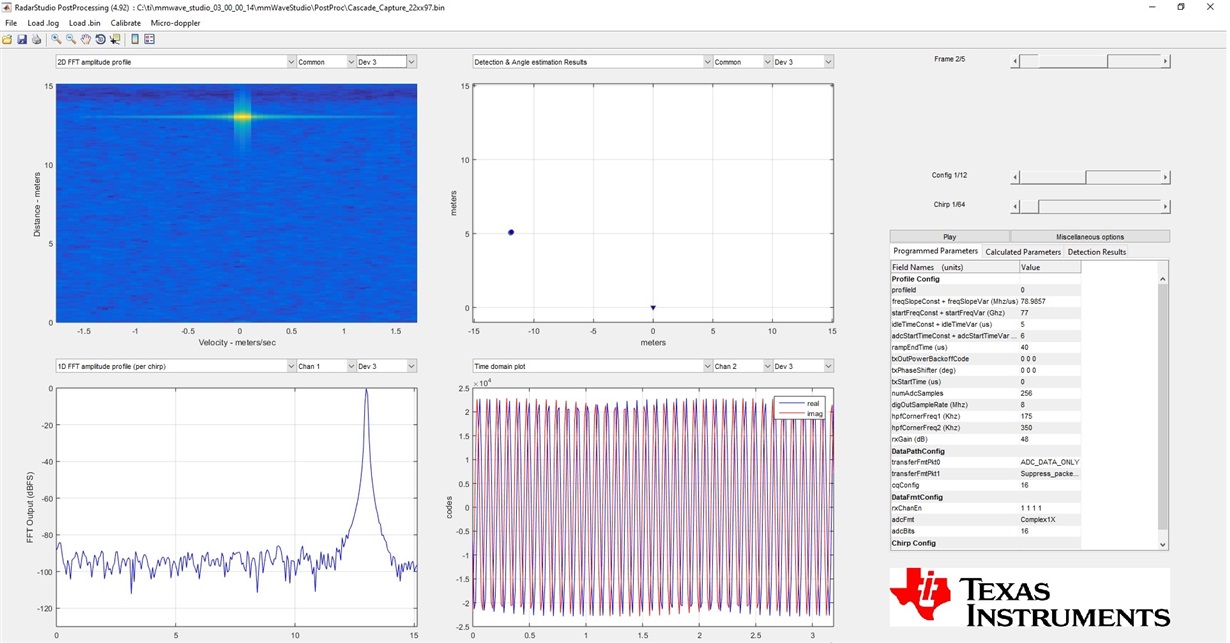Hello,
I'm trying to bring up MMWCAS DSP and RF EVM.
Following these threads ( ) it seems I'm able to record required number of frames.
) it seems I'm able to record required number of frames.
My question is more regarding the results I obtain, which doesn't correspond to the setup and moreover doesn't really change..
Settings are:
I run first Cascade_Configuration_TestSource.lua:
-- Profile configuration
local profile_indx = 0
local start_freq = 77 -- GHz
local slope = 79 -- MHz/us
local idle_time = 5 -- us
local adc_start_time = 6 -- us
local adc_samples = 256 -- Number of samples per chirp
local sample_freq = 8000 -- ksps
local ramp_end_time = 40 -- us
local rx_gain = 48 -- dB
local tx0OutPowerBackoffCode = 0
local tx1OutPowerBackoffCode = 0
local tx2OutPowerBackoffCode = 0
local tx0PhaseShifter = 0
local tx1PhaseShifter = 0
local tx2PhaseShifter = 0
local txStartTimeUSec = 0
local hpfCornerFreq1 = 0 -- 0: 175KHz, 1: 235KHz, 2: 350KHz, 3: 700KHz
local hpfCornerFreq2 = 0 -- 0: 350KHz, 1: 700KHz, 2: 1.4MHz, 3: 2.8MHz
-- Frame configuration
local start_chirp_tx = 0
local end_chirp_tx = 11
local nchirp_loops = 64 -- Number of chirps per frame
local nframes_master = 5 -- Number of Frames for Master
local nframes_slave = 5 -- Number of Frames for Slaves
local Inter_Frame_Interval = 100 -- ms
local trigger_delay = 0 -- us
local trig_list = {1,2,2,2} -- 1: Software trigger, 2: Hardware trigger
and then Cascade_Capture.lua
capture_time = 2000 -- ms
inter_loop_time = 2000 -- ms
num_loops = 1
n_files_allocation = 4
data_packaging = 0 -- 0: 16-bit, 1: 12-bit
capture_directory = "Cascade_Capture_22xx97"
num_frames_to_capture = 0 -- 0: default case; Any positive value - number of frames to capture
framing_type = 1 -- 0: infinite, 1: finite
stop_frame_mode = 0 -- 0: Frame boundary, 2: Sub-frame boundary,
-- 3: Burst boundary, 4: HW/Sub-frame triggered
Setup:
a) the setup on the table facing the ceiling (around 2.5m) I have
For Dev1 and Dev 2 results are the same:
For Dev3 and Dev4 results are the same::
b) the setup on the table facing a corner reflector around at 0.5m range
Results are identical for Dev1 and 2 and Dev3 and 4 to a human eye.
Any support please?
Thanks
Best
Maxim



